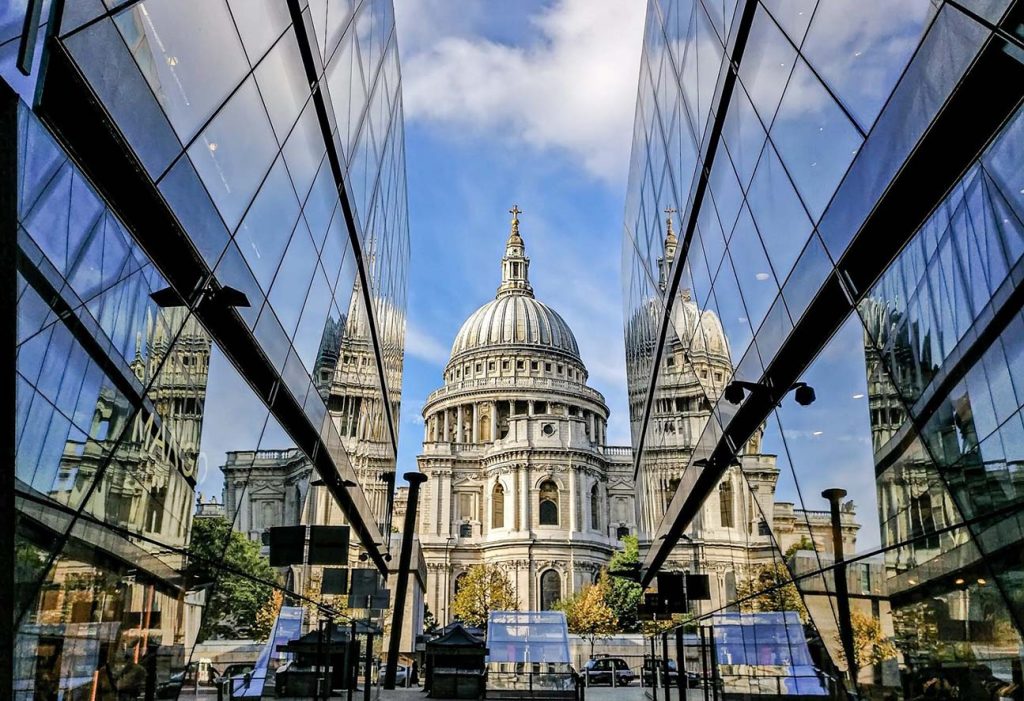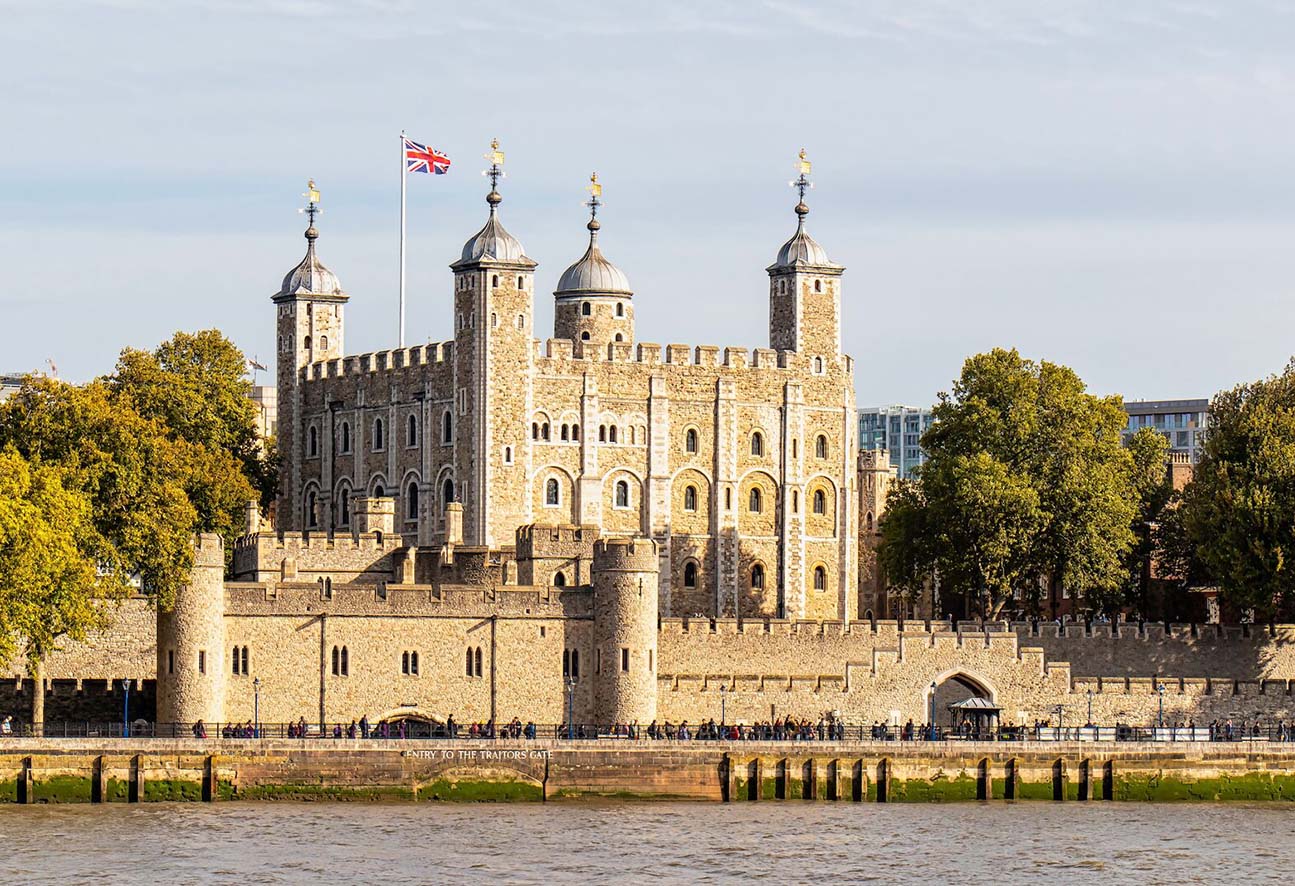I’m delighted to share with you a fascinating story from my recent trip to central London. Get ready for a magical adventure where history intertwines with the present and every landmark tells secrets from centuries past.
The Tower of London: A Fortress of Legends
My journey into London’s history commenced at the awe-inspiring Tower of London. The fortress, standing proudly against the march of time, exuded an undeniable sense of grandeur. Approaching its gates, I felt a mix of excitement and reverence as the stone walls seemed to whisper tales of centuries gone by.
Choosing a tour led by a charismatic tour guide proved to be a wise decision. His storytelling brought the historical figures to life, from kings and queens to the echoes of imprisoned souls. The pièce de résistance was undoubtedly the Crown Jewels, glistening like constellations in a velvet night sky. The £27 admission felt like a small price to pay for a journey through the annals of royal history.
Pro tip: Enhance your experience by booking tickets online. Not only does it streamline your entry, but you might also snag some enticing discounts. Avoid the crowds by planning your visit during off-peak hours.
The Shard: Sky-High Reverie
My exploration continued at The Shard, a modern wonder that seemed to touch the heavens. The £32 admission to the observation deck promised an unparalleled perspective of London’s expansive skyline. As the elevator ascended, my excitement grew, and reaching the top felt like stepping into a city suspended in the clouds. The symphony of city lights and iconic landmarks below was a mesmerizing visual feast.
Taking my time to soak in the breathtaking views, I marveled at the seamless blend of modern architecture and the timeless beauty of historic landmarks. The Shard’s strategic location allowed me to identify familiar sights such as Tower Bridge, the Tower of London, and St. Paul’s Cathedral, connecting the city’s past and present in a profound way.
As daylight faded, the atmosphere transformed. Sunset at The Shard was nothing short of a dream. The hues of orange, pink, and purple painted the sky, casting a warm glow over the city. It was a moment frozen in time, and I found myself captivated by the ethereal beauty that unfolded before my eyes.
Pro tip: Plan your visit to coincide with sunset for an unforgettable experience. Consider purchasing a combination ticket that includes nearby attractions to make the most of your day. Book your tickets online to avoid long queues and potentially enjoy discounts.
St. Paul’s Cathedral: A Stone Symphony

The journey led me to St. Paul’s Cathedral, a stone symphony that echoed with centuries of history. The £20 admission felt like a small investment in exploring this architectural masterpiece. As I stepped inside, the intricate carvings and the sheer scale of the cathedral left me in awe.
Climbing the 528 steps to the Golden Gallery was a physical feat rewarded with panoramic views of London’s skyline. It was a unique perspective that allowed me to appreciate the city’s layout, with landmarks like The Shard standing tall in the distance. Attending a service added a spiritual dimension, enhancing the overall experience.
Taking my time to wander through the cathedral’s interior, I marveled at the craftsmanship and attention to detail. St. Paul’s Cathedral served as a testament to human ingenuity and the enduring beauty of Gothic architecture.
Pro tip: Plan your visit strategically to make the most of your time. Attend a service or concert for an immersive experience. Look out for concession tickets, especially for students and seniors.
Westminster Abbey: A Tapestry of Royal History
I stood in front of the iconic Westminster Abbey as another chapter of my London adventure began. This architectural masterpiece is more than just a church, it is a living testament to British history.The £23 admission fee seemed a modest investment in uncovering the tales of kings, queens, and literary giants interwoven into its very stones.
Entering through the North Door, I was immediately struck by the sheer grandeur of the nave. The intricate fan vaulting above seemed to touch the heavens, creating an ethereal atmosphere. A guided tour, included in the admission fee, became my compass through this historical labyrinth.
Making my way to the Poet’s Corner, I found myself surrounded by the resting places and memorials of literary giants like Shakespeare, Dickens, and Austen. The artistic ambiance of this corner, filled with the whispers of poets past, captivated my imagination.
Venturing further, the Royal Chapels unfolded before me. The tombs of monarchs such as Elizabeth I and Mary, Queen of Scots, exuded an air of regality. The intricacy of the craftsmanship in the Cosmati Pavement beneath my feet was a testament to the artistry of bygone eras.
The Lady Chapel, bathed in soft light, provided a quiet sanctuary for reflection. The stained glass windows, depicting scenes from the Virgin Mary’s life, added a touch of serenity to the vibrant tapestry of history surrounding me.
The journey reached its zenith at the Coronation Chair, a symbol of centuries-old authority. The Stone of Scone beneath it, where monarchs are traditionally crowned, added a palpable weight to the historical significance of this sacred space.
As the day transitioned into dusk, Westminster Abbey took on a new persona. The exterior, illuminated against the darkening sky, became a visual feast. The Night Spectacular, an optional evening event for an additional £5, added a magical touch, showcasing the Abbey’s exterior in all its glory.
Pro tip: To avoid queues, consider purchasing tickets online. It not only streamlines entry but may also offer discounts.Opt for off-peak hours to explore at a more leisurely pace and avoid crowds. Early mornings or late afternoons are ideal.If time permits, attend the Night Spectacular. The illuminated Abbey at dusk is a visual treat not to be missed.
The Natural History Museum: A Symphony of Nature’s Wonders

Embarking on a voyage of natural marvels, I ventured into London’s renowned Natural History Museum, a treasure trove of the Earth’s history and biodiversity.
Entering through the grand entrance, I was immediately greeted by the towering presence of Dippy, the Diplodocus skeleton. A symbol of the museum, Dippy set the stage for the prehistoric wonders that awaited within. The sheer scale of this dinosaur fossil was a humbling introduction to the world’s ancient past.
My journey continued in the Earth Hall, where a colossal globe suspended from the ceiling showcased the planet’s geological history. Exploring the interactive exhibits, I traced the Earth’s transformative journey over millions of years. The earthquake simulator offered a thrilling, albeit safe, taste of the Earth’s raw power.
The highlight of my visit was the Dinosaur Gallery, where animatronic dinosaurs roamed amidst lush vegetation. The detailed recreations of these ancient giants, from the formidable Tyrannosaurus Rex to the graceful Triceratops, transported me back to the Mesozoic Era. Interactive displays allowed me to unearth fossils, adding an educational layer to the awe-inspiring experience.
Navigating into the Minerals and Gems section, I encountered a dazzling array of precious stones. The Hope Diamond, with its deep blue hue, and the intricately cut diamonds in the Vault gallery left me marveling at the Earth’s hidden treasures. The exhibit illuminated the geological processes that give rise to these sparkling wonders.
Pro tip: Take advantage of the Natural History Museum’s free admission policy. It’s a budget-friendly way to delve into the marvels of the natural world. Remember to take part in the interactive exhibits, especially the Dinosaur Gallery. They enhance the learning experience and make the visit enjoyable for all ages.
Check for any special exhibitions that may have an additional fee. These temporary displays often feature unique and captivating content. You can choose to visit on a weekday to avoid the weekend crowds. Mornings or late afternoons offer a quieter experience.
The British Museum: A Time-Traveler’s Odyssey
Without warning, I was attracted to the cultural treasure house of the British Museum. This institution, free to enter, stands as a gateway to civilizations across the globe. The absence of an admission fee made it an enticing prospect for an immersive journey through time.
I started my adventure by wandering into the Egyptian Antiquities section. The Rosetta Stone, a linguistic marvel, captivated my attention, and the mummies stood as silent witnesses to the passage of millennia. The meticulous hieroglyphics and ancient artifacts transported me to a bygone era.
Navigating through the Greek and Roman Galleries, I marveled at sculptures that once adorned ancient temples. The famed Elgin Marbles, a controversial but awe-inspiring collection, showcased the intricacy of classical art. It was as if I had stepped into the heart of Athens and Rome, surrounded by the echoes of ancient philosophy and myth.
Stepping into The Great Court, a modern architectural marvel at the heart of the museum, I was greeted by the expansive glass roof designed by Sir Norman Foster. The juxtaposition of contemporary design against ancient artifacts created a harmonious blend of old and new. It was a space that beckoned contemplation and appreciation for the evolution of human creativity.
The journey continued into the Mesopotamian Art section, where artifacts from Sumeria and Babylon unveiled the tales of early civilizations. The Ishtar Gate, with its vibrant blue tiles, transported me to the fabled city of Babylon, and the Assyrian Lion Hunt reliefs showcased the artistic prowess of ancient cultures.
Exploring the Asian Art galleries, I encountered a panorama of traditions spanning China, Japan, and India. The intricate details of Chinese porcelain, the serene beauty of Japanese prints, and the elaborate sculptures from the Indian subcontinent formed a diverse tapestry of artistic expression.
Pro tip: Take advantage of the British Museum’s free admission policy. It allows you to explore at your own pace without worrying about entrance fees.Check for temporary exhibitions. While some may have a separate fee, they often feature unique and special collections.Be sure to schedule your visit during off-peak hours to avoid crowds Mornings on weekdays are usually quieter.
As my journey through the wonders of London’s history draws to a close, I’m in awe of the city’s ability to weave a tapestry of time. May your travels be filled with wonder, and may London’s history embrace you like an old friend, revealing its secrets one chapter at a time!



